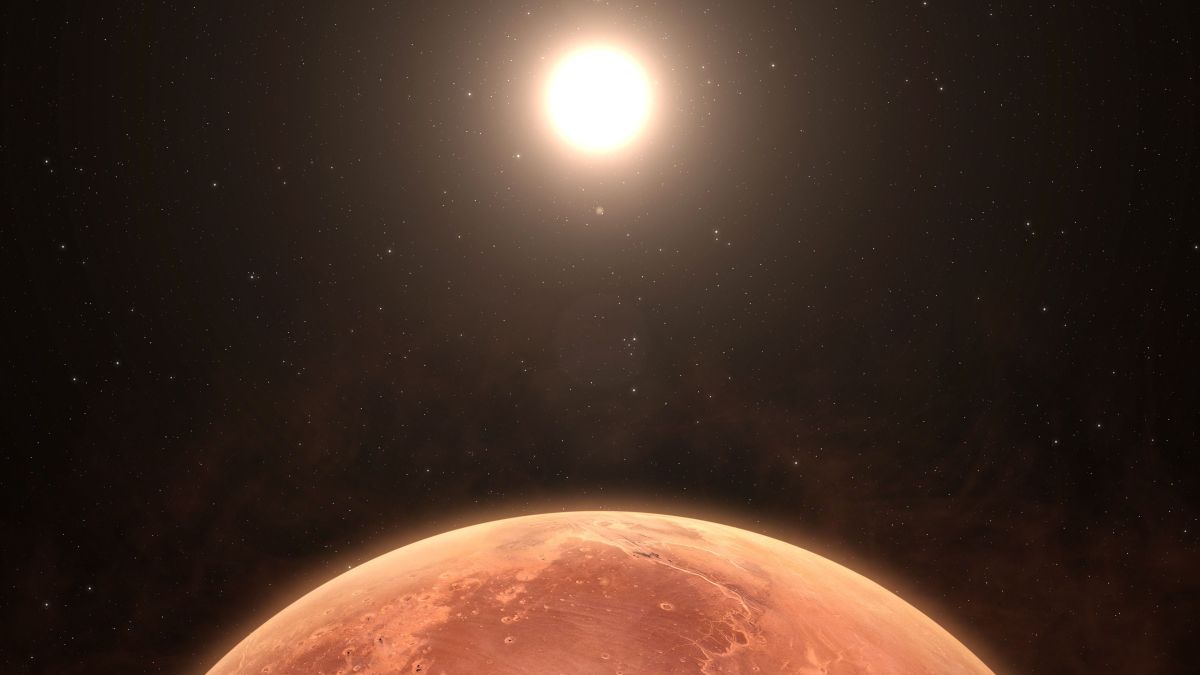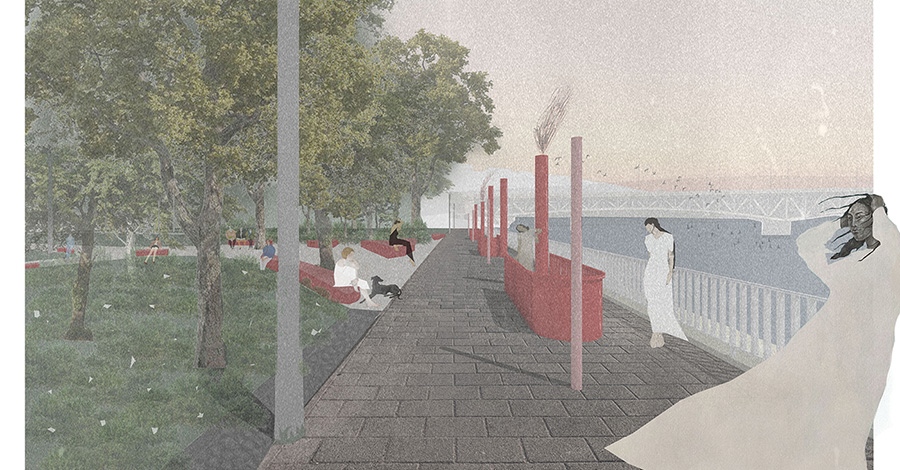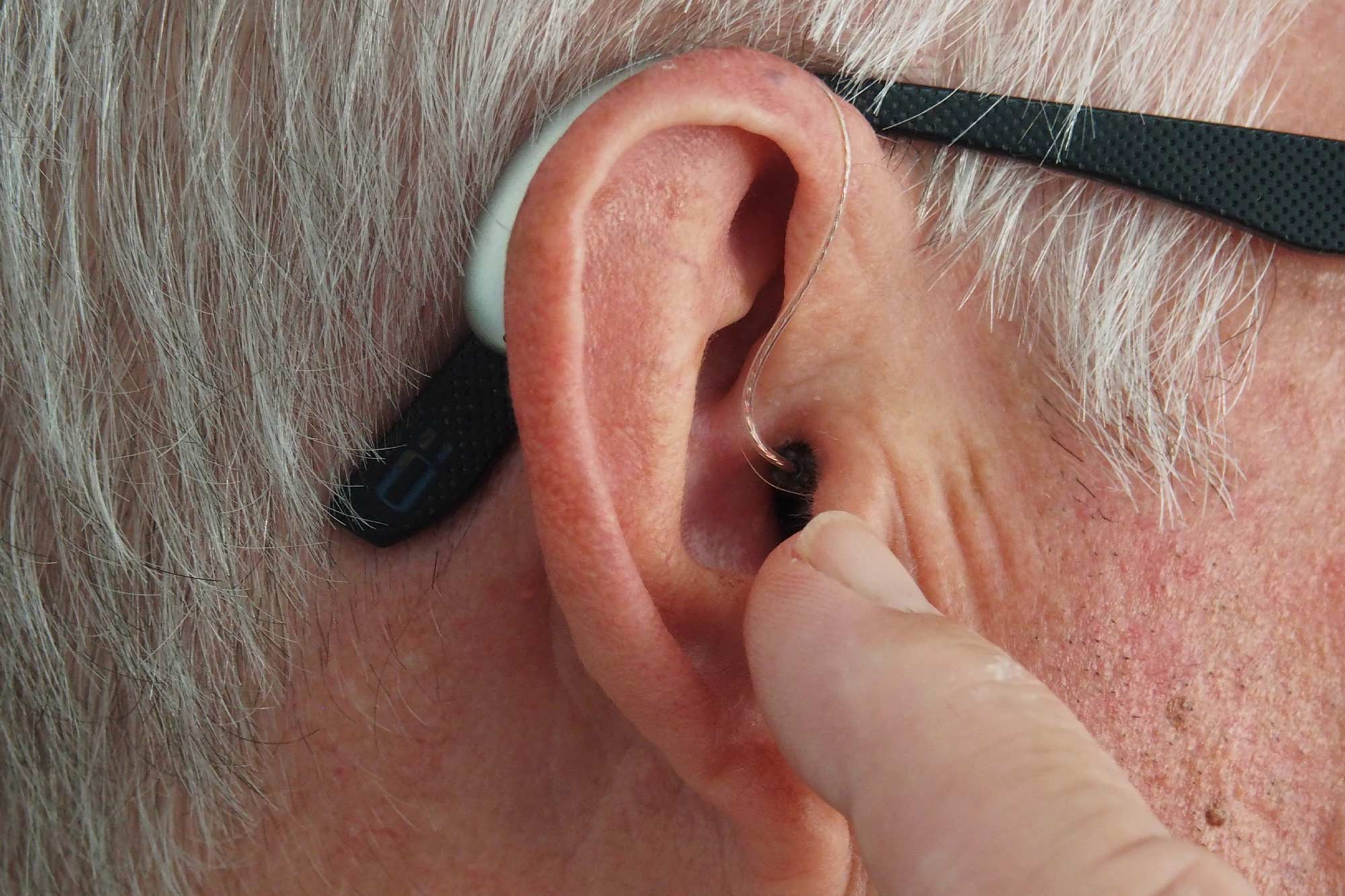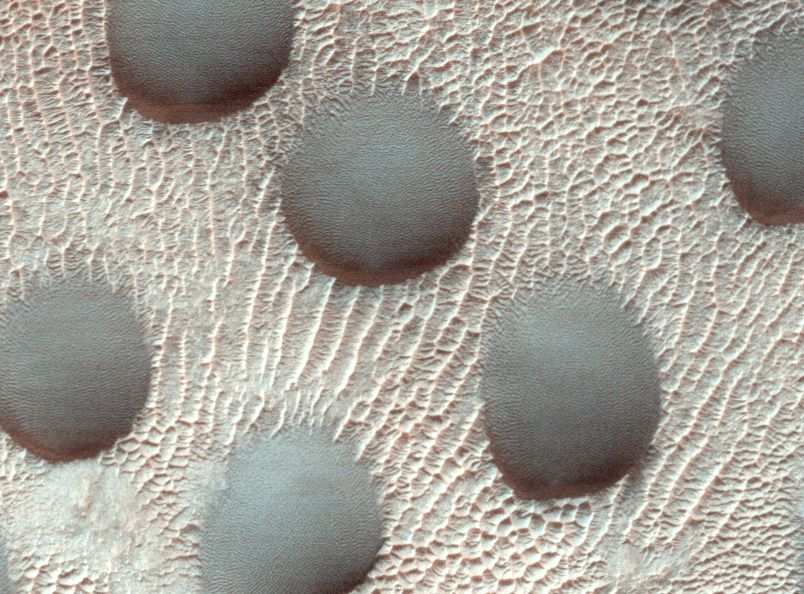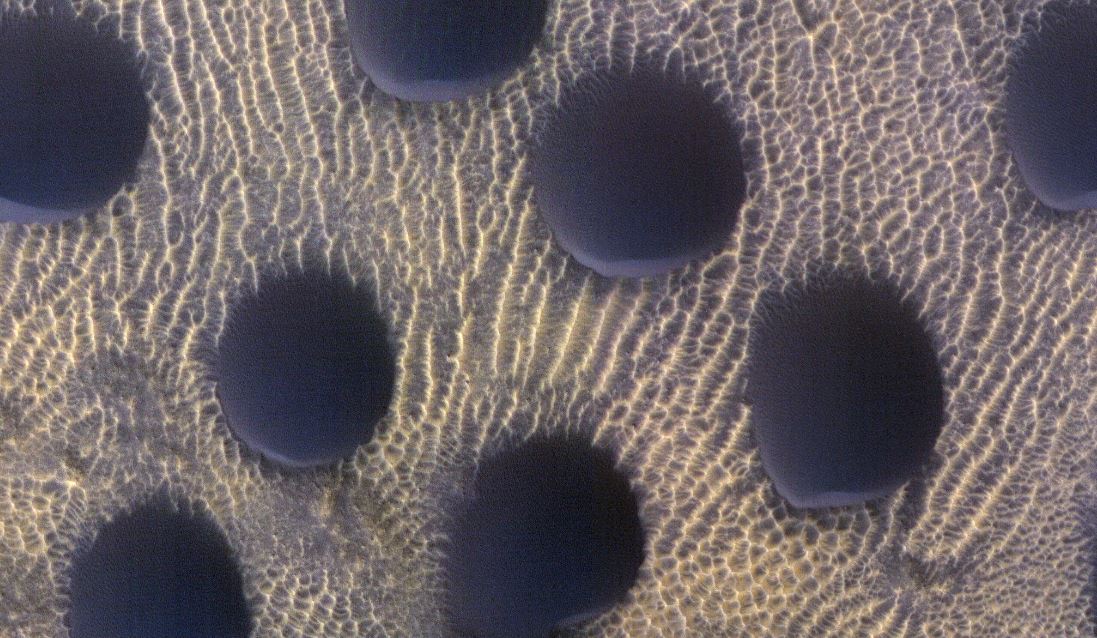It’s not uncommon for sand to form strange shapes on Mars, but the recently discovered circular dunes are almost exactly the same.
It was made by researchers from the University of Arizona (University of Arizona) with the HiRise (High Resolution Imaging Experiment) camera orbiting Mars. the pictureswhere you can see surprisingly regular sand dunes, which are almost perfectly symmetrical.
HiRise, which weighs about 65 kilograms and is located above the Red Planet, “sees” the same wavelength as the human eye, but with the help of its telescopic lens, takes pictures of unparalleled quality. A feature of its detail is that the smallest objects that can be removed in HiRise images are about 1 meter in diameter. This means that in the image of a telescope, which can simultaneously capture a circle with a diameter of about six kilometers from the surface of Mars, we can clearly make out a kitchen table. In addition, HiRise is capable of taking infrared images, which provide researchers with useful information about crystals and minerals on the surface of the Red Planet.
the Mars Reconnaissance OrbiterBy the camera on the NASA spacecraft orbiting Mars, from a height of about 300 kilometers, it shows that the sands on the planet were arranged in such regular shapes by the winds blowing towards the south. The researchers figured this out from the fact that the steepest side of the circular dune is to the south.
The images in our November 2022 photo series are for this purpose ManufacturedThe researchers will monitor the melting of the Martian ice as the end of winter on the Red Planet approaches. Each pixel (pixel) of the images corresponds to 25 cm in reality. From this it is also possible to deduce the size of the sand dunes in the images, which – as it turns out thanks to the series of images – move about 1 meter in one Martian year (about 687 Earth days) from the equator to the poles.
The camera has already taken many pictures of many sand dunes on Mars, and they reveal a lot about the weather conditions on the planet. For example, when it surveyed Lyot Crater in the northern plains of Mars in 2010, HiRise observed dune fields that showed how dunes channel local winds through the crater’s 236-kilometer-wide region.
HiRise is currently monitoring glacier-like formations on Mars by looking for cracks that pierce its surface. The series of images captured by the camera can help scientists determine the fracturing mechanics of slow-flowing material at the base of the Martian slopes. It is believed that these deposits were once rich in ice, but the source of this ice remains a mystery, according to NASA.
(Images: NASA/JPL-Caltech/UArizona)
















